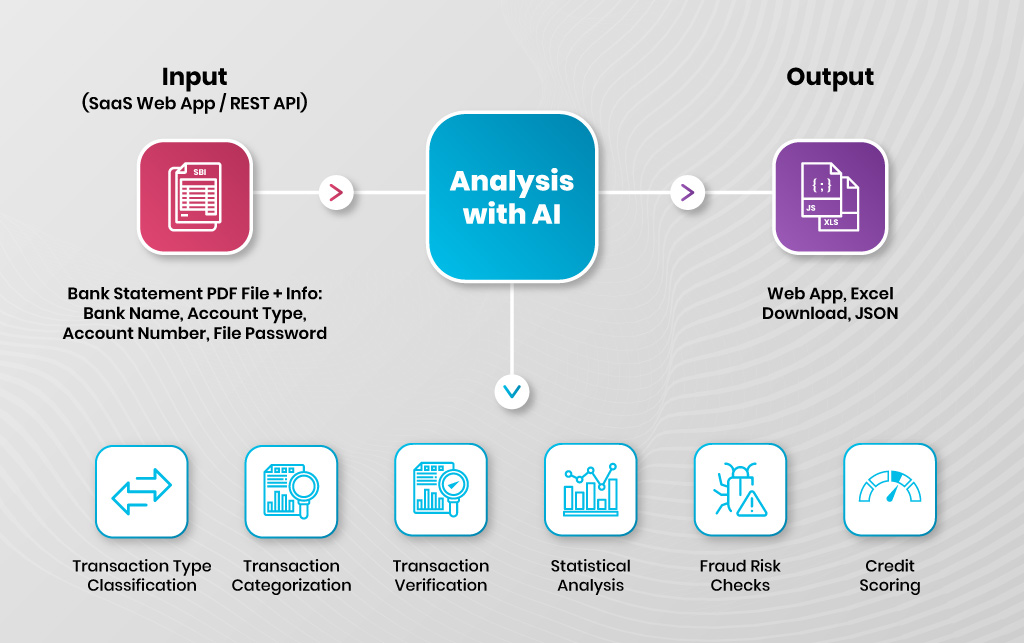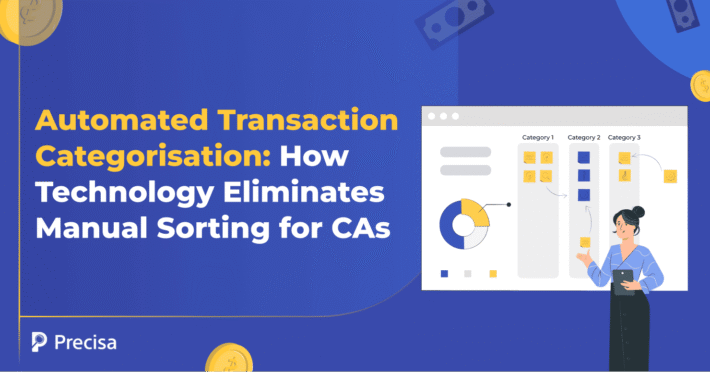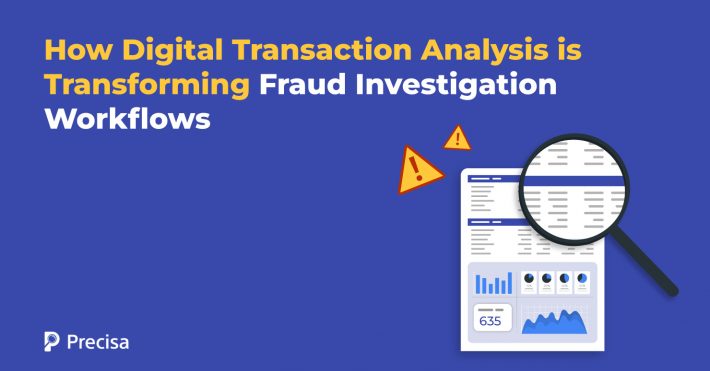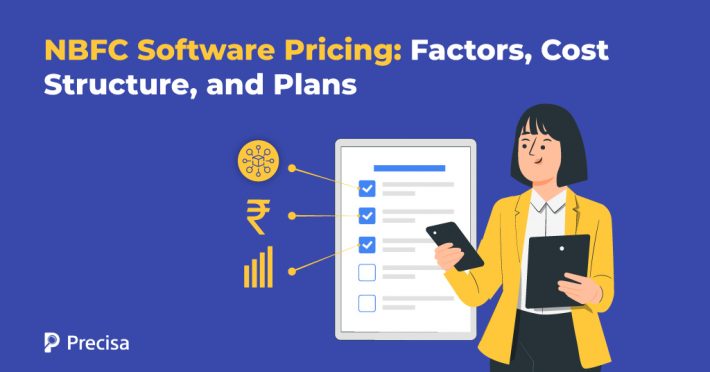Bank Statement Analysis 101

For banks, NBFCs, and other similar financial institutions, lending is one of the primary sources of revenue and also one of the most profitable ones. With a rise in financial literacy in India, the number of borrowers has increased and consequently, so has the number of payment defaulters. This has forced lending institutions to deploy more resources to validate the credibility of the borrowers.
Lending businesses typically conduct a credit history check, assess the collaterals, verify the applicant’s income sources, EMIs, expenditures, etc., to assess the potential borrowers’ creditworthiness. However, in most developing nations, a large percentage of individual borrowers and small businesses do not have much collateral. Most do not have any financial documents to showcase other than their bank account statements, be it salary accounts or savings/current accounts.
But bank statements are good indicators of an individual’s income, expenses, and most importantly, the spending pattern. Thus, most lending institutions determine the borrowers’ creditworthiness based on detailed scrutiny of their bank statements.
According to the RBI, by March 2021 the percentage of gross non-performing assets of the banks in India can rise up to 14.7% of total loans. Given the already high volumes of NPAs, there’s a need for banks and NBFCs to tighten their credit risk management practices. It only makes sense to adopt methods that are either fool-proof or at least close to it when it comes to risk assessment.
What is meant by Bank Statement Analysis?
Bank statement analysis is undertaken to assess a borrower’s credit patterns on the basis of his or her bank statements. Since bank statements contain the borrowers’ transaction history in a certain period of time, it gives detailed information on their income sources, expenditures, transfers, cheque payments, EMIs, credit card payments, interest deducted, interest earned, default penalties, etc.
For a lending institution, all these data are crucial for analysing the borrower profile. Accuracy, objectivity, and efficiency are highly valued here. But when the bank statement analysis is done manually, it is always prone to anomalies and computational errors. Such errors can be disastrous for banks that are already reeling from declining profits.
Here are some common challenges met during manual bank statement analysis:
- The contents of a bank statement are not uniform or consistent across banks or even across multiple branches of the same bank. The layout, format, abbreviations used, etc. change over time too.
- There are almost 500 banks in India and each one has multiple formats and layouts of statements. Then there are thousands of banks in the world, each with its own narrations and abbreviations in statements.
- Bank statement analysis isn’t a simple and straightforward task like parsing a pdf to an excel sheet. It takes time, careful scrutiny, and hundreds of employees and dedicated departments in each bank to do so.
Sounds tedious and wasteful, right? So what can lending institutions do to screen all the potential borrowers’ bank account statements quickly and accurately such that the chances of defaults are minimised? This is where advanced tools like bank statement analysers or bank statement analysis engines can come to the rescue.
How can Bank Statement Analysis be done Faster and More Accurately?
The solution lies in automation. By automating the analysis process using the latest Artificial Intelligence (or A.I.) and machine learning technology, generally called bank statement analysers or engines, the work that is hitherto done by hundreds of employees manually can be done quicker with better results. This has multiple benefits and increases the accuracy of the analysis, thereby enabling the lending institutions to make better credit decisions. Some of the top benefits of automated bank statement analysis are below:
1. More Automation Means More Reliability:
Manual analysis of bank statements becomes more and more cumbersome. This is especially true as the bank statement’s size and complications grow and the chance of human error is higher.
By automating the analysis, hundreds of statements can be scanned in less than a minute, helping the NBFCs and banks quickly make smart decisions. The results are also more reliable as the software would have been thoroughly tested for all scenarios.
2. Better risk assessment:
Automation also enables institutions to do specific keyword-based analysis. They help in conducting an in-depth dive evaluation of the customers’ other liabilities and incomes, in addition to the regular recurring payments, incomes and expenditures. It helps identify red flags accurately and predict the credit behaviour of the borrower. Also, a computer is always objective which means even lesser chances of any favouritism or partiality.
3. Better utilisation of resources:
Automation translates to better utilisation of manual resources. This enables the lending institutions to deploy the human resources that are normally deployed in manual analysis and review of bank statements to other revenue-generating streams. This naturally leads to lesser cost to the Financial Institution.
4. Lower Operating Costs
Manual operation requires an elaborate team on the part of the lender to deal with the large volume bank statements that need to be analysed daily. The output is slow and often, wasteful. On the contrary, if an automated process is implemented, a faster output is delivered by fewer people. This means lenders can save much on their operating costs.
4. Extending credit to borrowers with no collateral:
Due to the efficiency, automated bank statement analysers help lending institutions reach a significant population of potential borrowers who do not have any collateral other than bank statements. By providing loans to individuals who have otherwise have no access to credit, the institution can increase its revenue drastically and at the same time, prove to be a driver of the economy.
Many SMEs and other smaller business establishments do not have an elaborate credit history, sophisticated financial reports, and huge collateral other than simple bank account statements, automated bank statement analysis provides an accurate and almost real-time assessment of their financial health, enabling lending institutions to reach a larger segment of potential borrowers.
How Does a Bank Statement Analyser Work?
The BSA engine extracts data from the bank statement, validates each transaction, and categorises it according to different criteria. Finally, it generates a report with valuable financial information for credit scoring and modelling. Moreover, it detects any missing information and identifies potential red flags by assessing file modification history and the correctness of bank balance.
Below are some of the key functions that a BSA performs:
- Recognition and Verification of Information
- Income Accounting
- Expenditure Analysis
- Examining Financial Health
- Fraud Risk Warning
- Credit Scoring
Final Thoughts
Parsing hundreds of pages and multiple account statement data manually is daunting and prone to human errors or even subjective biases. On the other hand, an automated bank statement analysis makes this process objective, convenient, and reliable.
This also gives a holistic view of the borrowers’ income and expenses and enables the Financial Institutions to improve their loan turnaround time with fast credit approvals.
The only step that remains manual is that the borrowers need to upload the account statement PDFs and the software will take care of the rest. Real-time banking statement analysis could be the future once all Financial Institutions join the Account Aggregator ecosystem. This way, the manual work of uploading can also be eliminated, further reducing the turnaround time. Automated bank statement analysis also eliminates any scope for tampering with the statements and increases the overall accuracy of the results.
Flow-based lending, backed by cutting-edge and concrete bank statement analysis, can transform rural credit and foster the rural economy in India, who are still far away from the umbrella of financial support. This also naturally translates to increased revenue for the lending institutions.
Precisa, a bank statement analysis engine can simplify the process and assess your borrowers’ creditworthiness in a simple, efficient and convenient manner. Try now Precisa’s 14-day FREE trial.




